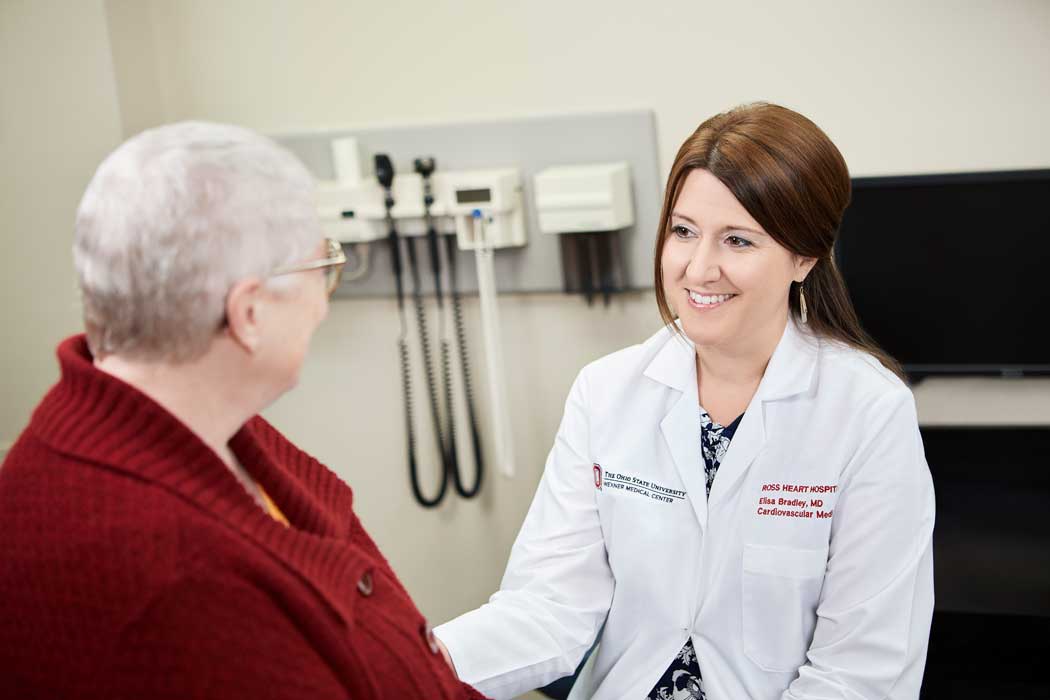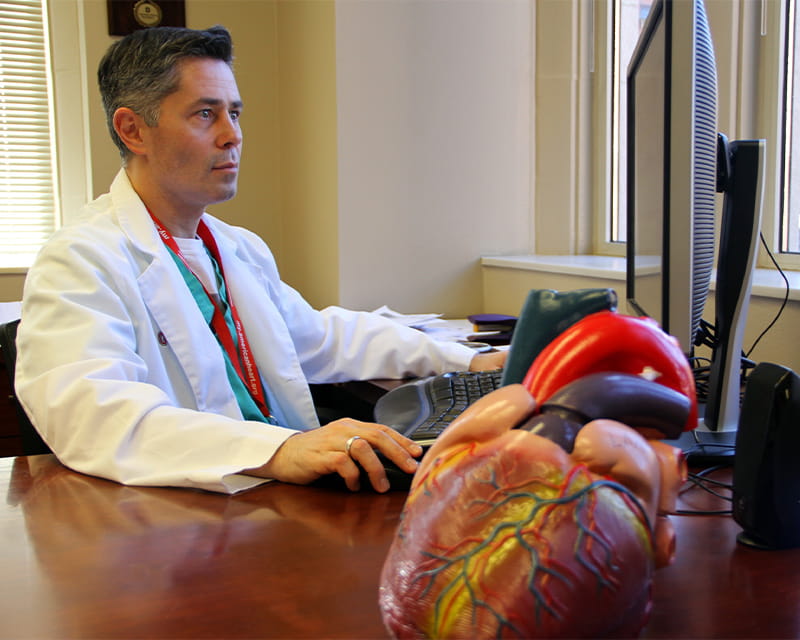
Safer Patient Transport

Adult Congenital Heart Specialist, Elisa Bradley, MD
A young man in his 30s was referred to Ohio State cardiologist Elisa Bradley, MD, with possible Marfan syndrome. Dr. Bradley, a specialist in adult congenital heart disease, examined the patient and did a thorough personal and family history. She discovered an aortic aneurysm in the young man and a family history of heart events: a half-brother in his 30s who had an aortic dissection 10 years prior and a cousin who had previous heart surgery.
Dr. Bradley sent her patient for genetic testing and found that both he and a half-brother had a variant of unknown significance in the PLOD1 gene. “So far, this particular mutation is not reported in the literature to cause aortopathy,” she says. Variations in PLOD1 are well-described in medical literature, but most are related to peripheral musculoskeletal symptoms and conditions. This latest mutation appears to affect aortic tissue, as evidenced by the cystic medial disease of her patient.
“Most current genetic testing panels have ~12 known genes that cause aortopathy,” Dr. Bradley says. “PLOD1 is in the panel, however the specific mutation in this family has not yet been described, in particular with high penetrance, as is present in this family.”In all, there are at least four family members identified with the mutation, and Dr. Bradley’s team is currently working with extended family members for additional testing. They suspect the familial predisposition is autosomal dominant with high penetrance.
Her research team hopes to fully characterize the mutation within the next year and to begin to determine its prevalence. “This has the potential to be something that we could use to screen for cause of disease,” she says. “We’re also looking at what’s happening downstream with protein signaling and function in order to better understand the reason that this mutation causes aortopathy.”Dr. Bradley believes the impact of genetics on aortopathies is under-reported. “There are multiple causes of FTAAS, and we guess that at least 20 percent of aneurysms are familial,” she comments.
She says that adding to that knowledge base could be “extremely helpful in identifying future patients who may have aneurysms. This could lead to better screening, appropriate surveillance of aneurysm size and earlier intervention for select groups affected by this gene mutation.” Steps like keeping blood pressure under control and intervening early before aneurysms reach a size that can be dangerous can help prevent life-threatening events like aortic dissection. Ohio State has several studies in progress or under review to evaluate people with FTAAS. Dr. Bradley says most large, academic medical centers have clinicians who manage familial aortopathies, but only a handful of centers are researching the condition. By accurately identifying disease processes, clinicians have a heightened awareness for screening patients at risk and preventing deadly conditions like aortic dissection and cardiac arrest.
Read more featured stories about The Ohio State University Heart and Vascular Center.

Safer Patient Transport

New treatment for atrial fibrillation

First US Medical Center in Clinical Trial